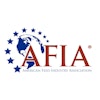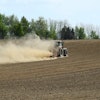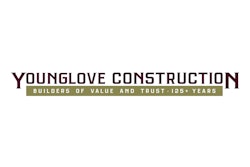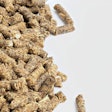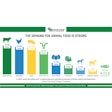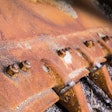In the feed industry, Younglove Construction L.L.C. is widely known as a high-quality building, design and construction firm with a focus on customer service. The company, based in Sioux City, IA, has been in business for more than 120 years and is one of the country’s top contractors of both Greenfield facilities and feed mill expansions.
Throughout its history, the company and its employees have seen feed milling trends come and go, but their experienced engineers have always stayed on the cutting edge by offering features their clients need to meet today’s demands.
These days, many of the design features Younglove incorporates into its projects are driven by a greater demand for specialty feeds, pathogen control and high-volume output. Contemporary commercial mills tend to be larger — adding complexity to their layout and equipment requirements — with an increasing need for skilled labor.
To shed light on some of the factors influencing newly built feed mills, Feed & Grain sat down with Loren S. Field, P.E., vice president, Youglove Construction L.L.C., for an exclusive Q&A session.
Feed & Grain: What is the No. 1 feed mill design trend you’re seeing in the field?
Loren Field: No. 1 is the production capacities of the mills are increasing. So the feed processing and the material handling equipment is getting bigger. We used to think that a 10,000/ton a week mill was a big mill — and it was at the time, but now we're going to be building a feed mill for one of our customers that will produce up to 30,000 tons/week. That’s a million and a half tons a year! We also see companies receiving more unit trains of soybean meal as well as grain, so they have to put onsite storage in for larger quantities of bean meal.
I think as long as there is low-cost diesel fuel and the trucking costs are reasonable over a large radius, then feed mills will continue to “go big.” When the trucking costs start to overtake the manufacturing cost, then they're going to have to go back down in size.
F&G: How has the increased capacity influenced other areas of feed mills?
LF: One result is we’re seeing a lot of concrete storage go up. Concrete is a big advantage over steel because these facilities cycle grain much faster than they ever have, so that works the tank more. Steel bins tend to flex more and they work harder to resist that grain pressure and consequently, concrete is a long-term better vessel from a usability standpoint.
F&G: How have consumer habits or trends impacted today’s feed mills?
LF: There is more desire for antibiotic-free feed, which requires segmented mills within mills with two mixers, one non ABF and one for feed with antibiotics. We’re also starting to have some activity in organic on a larger scale. Not just the small 50-pound-bag manufacturers, but it’s getting to be bulk load-out type mills.
F&G: How has facility automation changed mill operations over the years?
LF: These facilities now are a far cry from what they used to be. You only need a handful of people to run a mill no matter what size it is, but it is getting hard to find qualified labor to run these PLC control systems. The industry has got to start requiring at least a two-year technical degree or some type of further education to run new mills. The PLCs and the electrical systems are getting more complicated, so the operators need more training to do those jobs with the high-tech controls that new mills are equipped with.
F&G: What possible trends do you see in the future?
LF: There has been some request for a more sanitary feed mill design, more like a food plant. We haven’t put that into practice yet, because of the significant costs associated.
For more information about Younglove Construction L.L.C., visit www.younglovellc.com or contact Loren Field at 712-233-3207 or [email protected].

